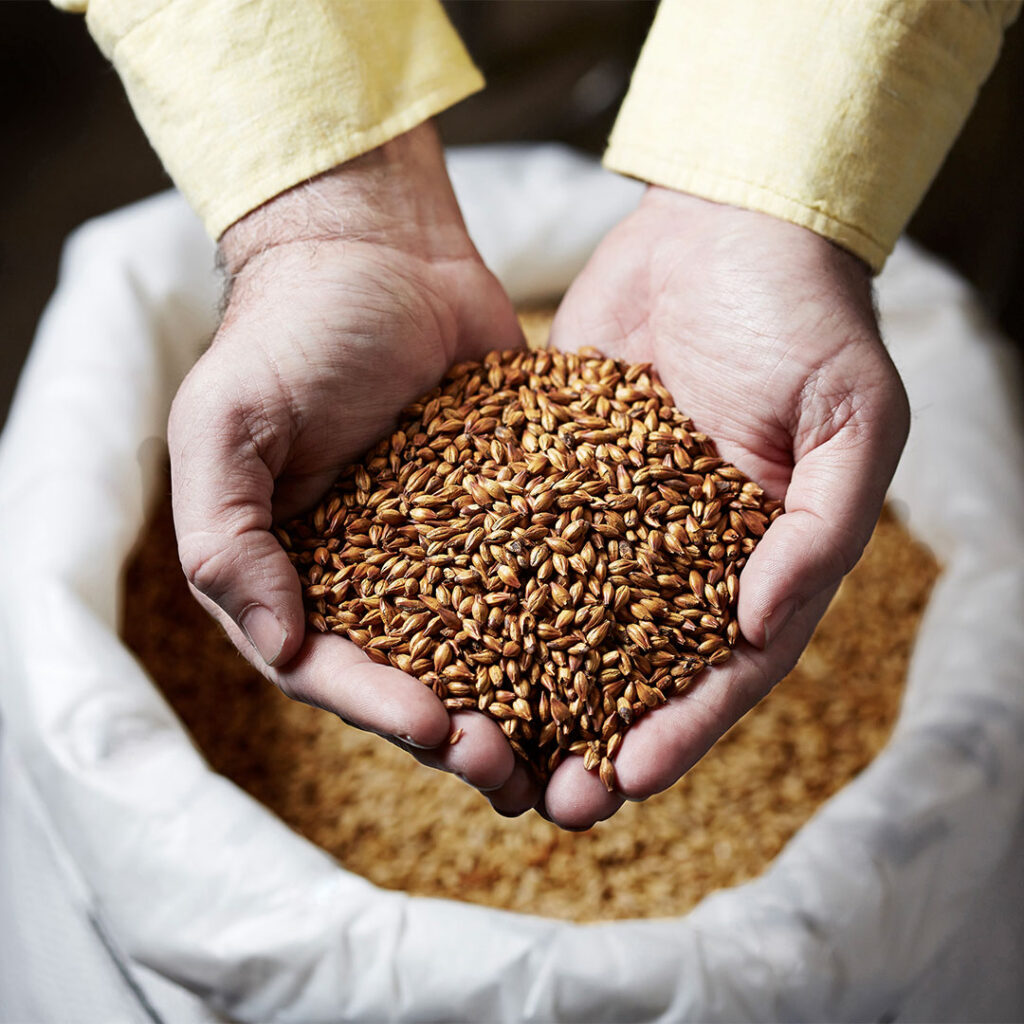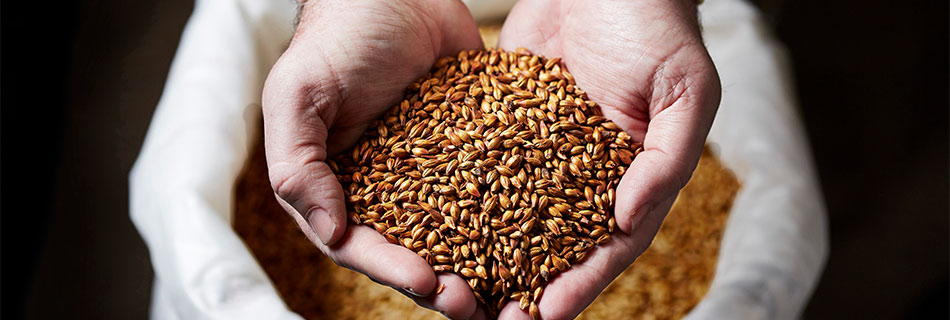Caramel malts have come a long way, but their roots go back to traditional kilning techniques. Brewers once covered kilns with tarpaulins to trap moisture while heating green malt to 60–75°C. After two hours, the starch inside fully converted to sugars. Then, they removed the tarpaulin, cranked up the heat past 100°C, and ventilated the grain. This final blast of heat dried and caramelised the malt, locking in its signature sweetness.

Today, caramel malts still follow the same core process, but modern roasting drums make it far more precise. As the name suggests, these malts add rich caramel sweetness to beer. The secret lies in an extra stewing step, done between germination and kilning. Inside the roaster, green malt stays at 63–75°C during saccharification, allowing starch to break down into a sugary liquid trapped under the husk.
Once fully converted, the malt must be dried. Modern roasters handle this too, ensuring smooth caramelisation. As heat rises, liquefied sugars transform into solid, semi-crystalline dextrins. At the same time, two key reactions take place. First, sugars break down into brown caramel compounds like pyrones and furanones. Meanwhile, Maillard reactions between sugars and peptides create melanoidins. When temperatures climb even higher, these compounds form High Molecular Weight (HMW) melanoidins – responsible for the deep colours and bold flavours of darker caramel malts.
Contributions of caramel malts
Caramel malts don’t just add flavour – they change the entire beer. Their caramelised sugars stay intact during mashing, directly boosting wort gravity. As a result, they enhance malty sweetness, deepen colour, amplify aroma, and create a fuller mouthfeel. Plus, they improve foam retention, giving beer a thick, creamy head.
Different shades of caramel malt suit different styles. Medium-coloured malts add depth to Amber and Red Ales, Märzen, and Bock beers. Darker caramel malts bring complexity to Porters and Stouts. Lighter versions subtly sweeten and improve foam in Pilsners and Lagers.
Wherever they go, our Gold Swaen malts make an impact. From crisp Lagers to bold Stouts, they bring body, depth, and balance, proving why they remain essential in brewing today.


